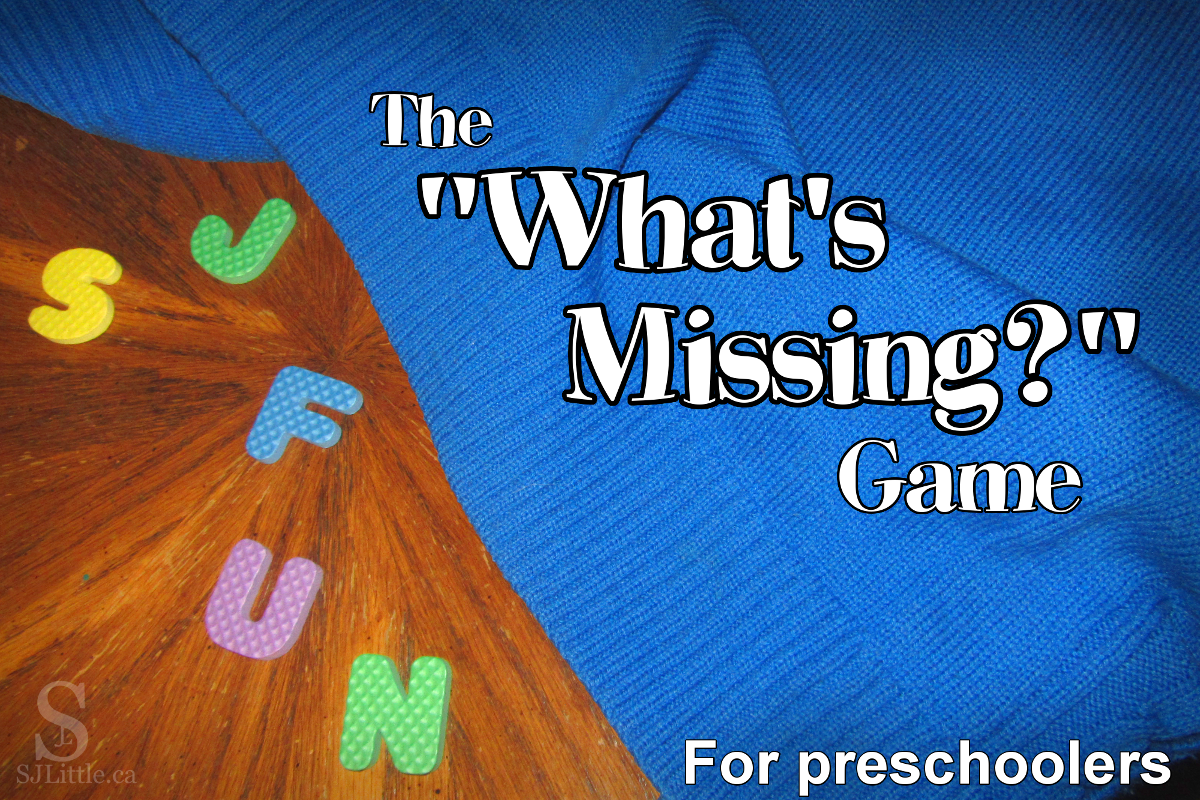
This simple game is fantastic for engaging your preschoolers. It makes your children think hard as they try to solve the exciting mystery of what’s missing!
The game itself is extremely basic, yet the modifications and ways of using it to teach specific vocabulary are nearly endless. It can be played with a group of children or just one child.
Why play?
Children love this game! Not only is it fun and interactive, but it also makes your children think hard. Our brains, like our muscles, need exercise and stretching to make them strong. This game provides an excellent brain-stretching exercise for kids, and for adults too. I’ve often been amazed at how quickly my children are able to learn the skills needed to play this game well. You’ll soon find yourself needing to make it harder and harder to keep them challenged.
Not only that, but this game is also a great opportunity to provide a review of the vocabulary your children are learning, whether letter names, or colours, or various zoo animals.
How to play “What’s Missing?”
- Collect various unique items.
- Show the children the items and review their names.
- Cover the items with a blanket to hide them from the children’s sight. While they are hidden, remove one of the items.
- Uncover the items and encourage the children to guess what’s missing.
- Repeat until all the items have disappeared
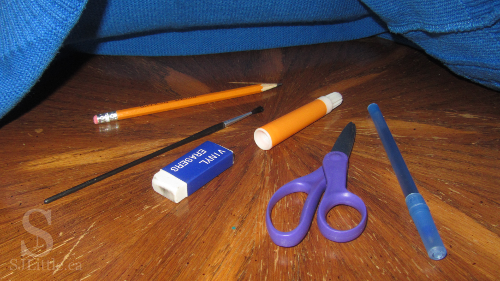
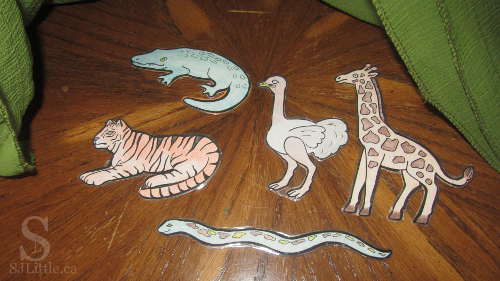
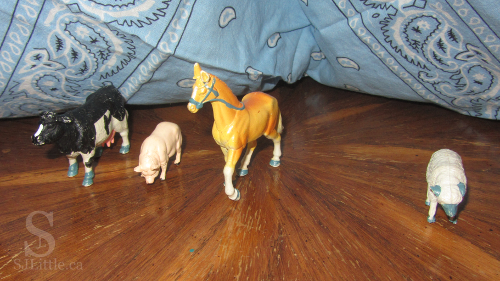
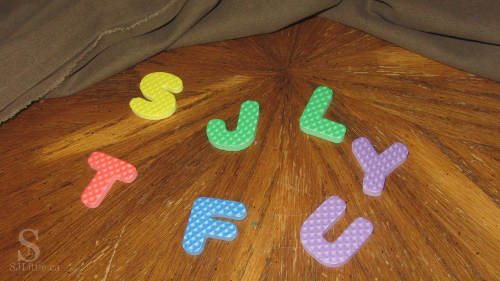
Tips
Make it engaging:
- Be excited about figuring out what’s missing. If you’re excited about it, your children will be too.
- When your children guess right, celebrate with them. When they guess wrong, be encouraging. Learning that it’s okay to make wrong guesses will help them succeed in school and life.
- Try to play at a level where your children can guess correctly 75% of the time. You want it hard enough that they have to think, but not so hard that they become discouraged and give up.
Which items to choose:
- You can use just about anything to play this game!
- Small plastic toys such as farm animals
- Paper zoo animals that you printed and coloured
- Random craft/office supplies such as glue stick, pencil, paintbrush, etc.
- Small cars or construction vehicles
- Magnetic letters
- Small blocks of various colours and shapes
- The more similar the items are to each other the harder the game becomes. Beware that it also becomes far more tricky if the children are unfamiliar with the right words to name the items.
Make it easier:
- Use fewer items. For a class of two years olds, I often start with only 4 items the first time I play with them. Once they understand the game and are guessing well, I might use more items the next time we play.
- Use items the children are able to name well. Something like an ostrich is harder for the children to recall that it is missing and to produce the name as a guess.
- Use items that are very different from each other.
- When you remove an item, leave its spot empty to help them recall what’s missing.
- Each time, before covering the items, review the names of the items to help the children memorize them.
- For younger children, when I get down to one item left, I like to ask them which item they think will disappear. Then I proceed to make the final item disappear.
Make it harder:
- Start with more items.
- Use more challenging items, such as the letters of the alphabet or more unusual animals.
- Use items with fewer differences such as all the items are dolls, but their outfits are different.
- Remove more than one item per round.
- After removing an item, rearrange the items before revealing them to the children.
Use it to teach concepts:
-
- Each time an item is removed, review the names of the remaining items before covering them again.
- Choose familiar things for most of the items, but add one or two unfamiliar items. Leave the unfamiliar items until closer to the end so the children get lots of practice saying those names.
- Choose items that focus on one particular topic. If you want to focus on colours, select items that are identical (or nearly identical) other than their colour. If you want to work on shapes, select items that are nearly identical in colour so that the shape is the most prominent difference.
Play over a video call
Looking for another easy, use what you have, activity for your children? Check out: Run Run Run

